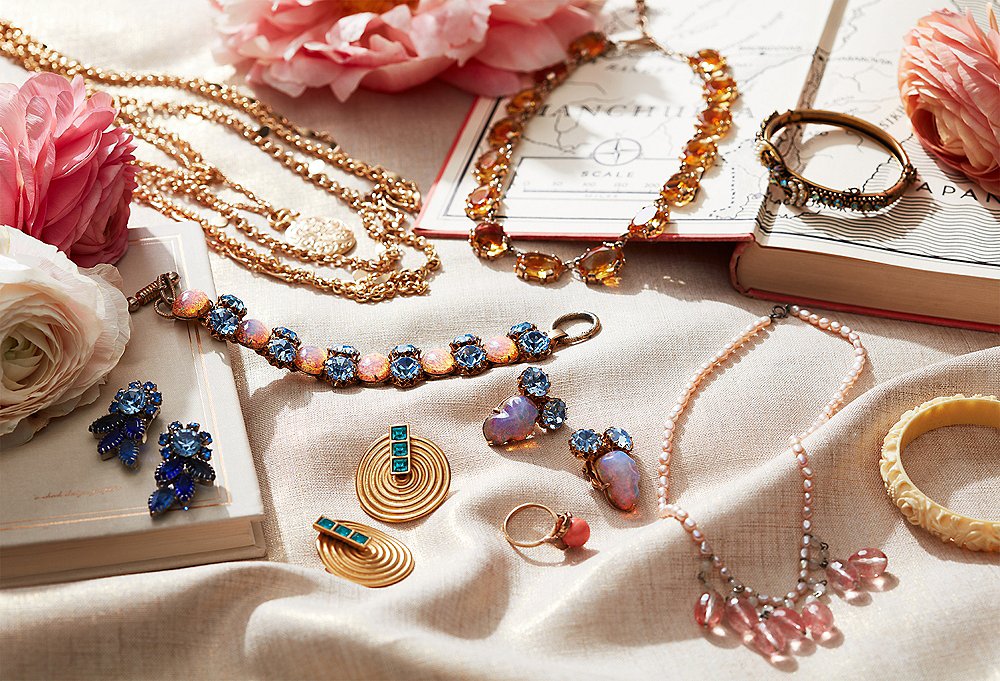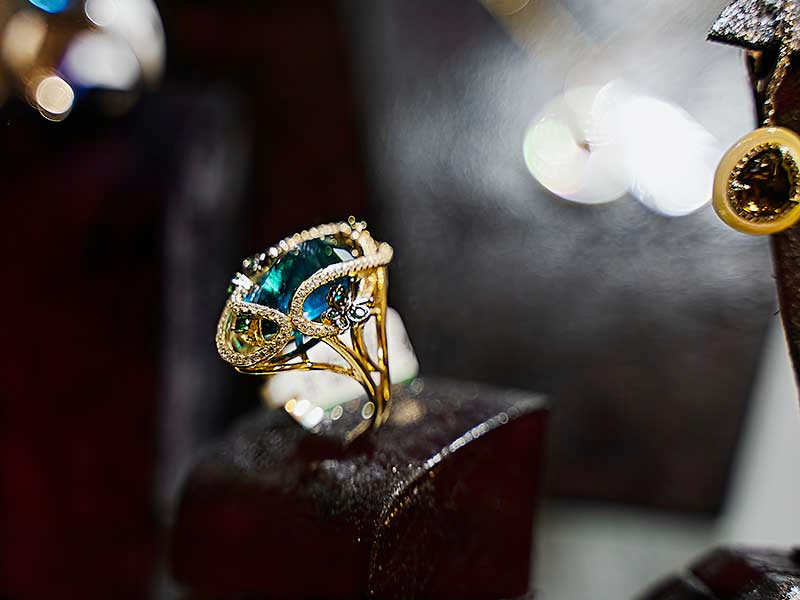Unveiling the Rich Background Behind Exquisite Estate Precious Jewelry Pieces
The exploration of beautiful estate jewelry pieces reveals a rich tapestry of history, mirroring the social worths and imaginative movements of their time. As we take a look at the elaborate information and provenance of these pieces, one need to take into consideration the profound tales they hold-- stories that might challenge our understanding of appeal and relevance in the globe of fashion jewelry.
The Origins of Estate Fashion Jewelry
The beginnings of estate precious jewelry can be traced back a number of centuries, showing a rich tapestry of cultural and historical influences. Fashion jewelry offered as a symbol of riches and condition among aristocrats and nobility. As various human beings arised, special styles and techniques evolved, usually linked with the customs and beliefs of their corresponding cultures.

As societies progressed, estate precious jewelry started to represent even more than plain accessory; it became a type of personal expression, with items often gave through generations. This transfer of ownership imbued each thing with stories and memories, additionally improving its value. Thus, estate fashion jewelry incorporates a myriad of impacts, encapsulating the essence of human experience, virtuosity, and history, making it a considerable element of the precious jewelry world today.

Noteworthy Historic Periods
Throughout history, various periods have dramatically influenced the design and importance of estate jewelry. Each period came up with distinct designs, products, and cultural contexts that formed the virtuosity of jewelry-making.
The Victorian era (1837-1901) marked an extensive change in jewelry design, identified by charming concepts and complex workmanship. Throughout this time, fashion jewelry usually signified individual view and was often utilized to memorialize considerable life events. The Art Nouveau activity (1890-1910) adhered to, emphasizing natural kinds and moving lines, drawing motivation from nature and the human figure.
The Roaring Twenties proclaimed the Art Deco period (1920-1939), renowned for its geometric shapes, bold colors, and a sense of modernity. This era showed the pep of allure Age and the wish for deluxe and luxury. Following Globe War II, the Mid-Century Modern period (1945-1960) embraced simpleness and functionality, showcasing clean lines and ingenious products.
Each of these historic ages has actually left an indelible mark on estate fashion jewelry, not just in regards to aesthetic charm but additionally in the way these items show the societal values and technological advancements of their time.
Iconic Design Attributes
Frequently, renowned design qualities of estate precious jewelry expose an abundant tapestry of cultural impacts and creative activities. estate jewelry buyers near me. Each piece acts as a visual narrative, showcasing the basics stylistic preferences of its period and the craftsmens' mastery. For example, the intricate lattice job usual in Victorian jewelry exhibits the period's fascination with nature and love, typically including motifs such as blossoms and leaves.
The Art Nouveau activity introduced moving lines and organic kinds, highlighting the appeal of all-natural aspects. On the other hand, the vibrant geometric patterns of Art Deco fashion jewelry mirror the modernist principles of the 1920s, identified by symmetry and an emphasis on industrial materials.
Additionally, making use of vivid gemstones and ingenious methods, such as enameling and pavé settings, better differentiates these items. Shade combinations commonly match to certain social contexts, with particular stones representing wide range or condition.
Famous Estate Precious Jewelry Pieces
Estate precious jewelry encompasses a variety of renowned pieces that have transcended time, each informing a special story of its origin. Among these, the "Napoleon Ruby Necklace," initially crafted for Empress Josephine, exemplifies luxury with its intricate design and historic importance. Another renowned piece is the "Cartier Panther Bracelet," which showcases the famous panther concept that has come to be synonymous with the Cartier name, mixing artistry with a bold declaration.
The "Bulgari Serpenti" collection, with its sinuous, snake-inspired styles, has captivated enthusiasts given that the mid-20th century, signifying luxury and appeal. Furthermore, the "Maharaja Necklace," adorned with a fascinating variety of gemstones, mirrors the majesty of Indian aristocracy and the abundant cultural heritage connected with estate fashion jewelry.

The Value of Provenance
Provenance plays a crucial role in establishing the value of estate precious jewelry, as it provides a recorded background that enhances the piece's relevance and value. A product with a well-documented important link family tree often regulates higher prices because of its association with noticeable figures, historical occasions, or artistic movements. Collection agencies and financiers alike are drawn to items that narrate, as these narratives include layers of indicating beyond mere looks.
The verification check my reference of provenance can entail various forms of documents, such as original purchase invoices, evaluations, and exhibition records. In addition, dental backgrounds passed down through households can add to the narrative, boosting the allure of the fashion jewelry (estate jewelry for sale). The even more reputable and detailed the provenance, the more probable it is to bring in attention on the market
Moreover, provenance can mitigate problems concerning credibility; items with established backgrounds are less most likely to be considered as recreations or counterfeits. In this method, provenance not only boosts the intrinsic value of estate precious jewelry however also safeguards the collection agency's financial investment. Inevitably, an engaging provenance transforms an item from a mere object right into a valued artifact of history, making it a coveted addition to any type of collection.
Conclusion
The exploration of estate jewelry reveals an extensive connection between artistry and historical context. Eventually, the abundant narratives behind estate jewelry not only celebrate private creativity however also envelop the more comprehensive tapestry of human history and social advancement.